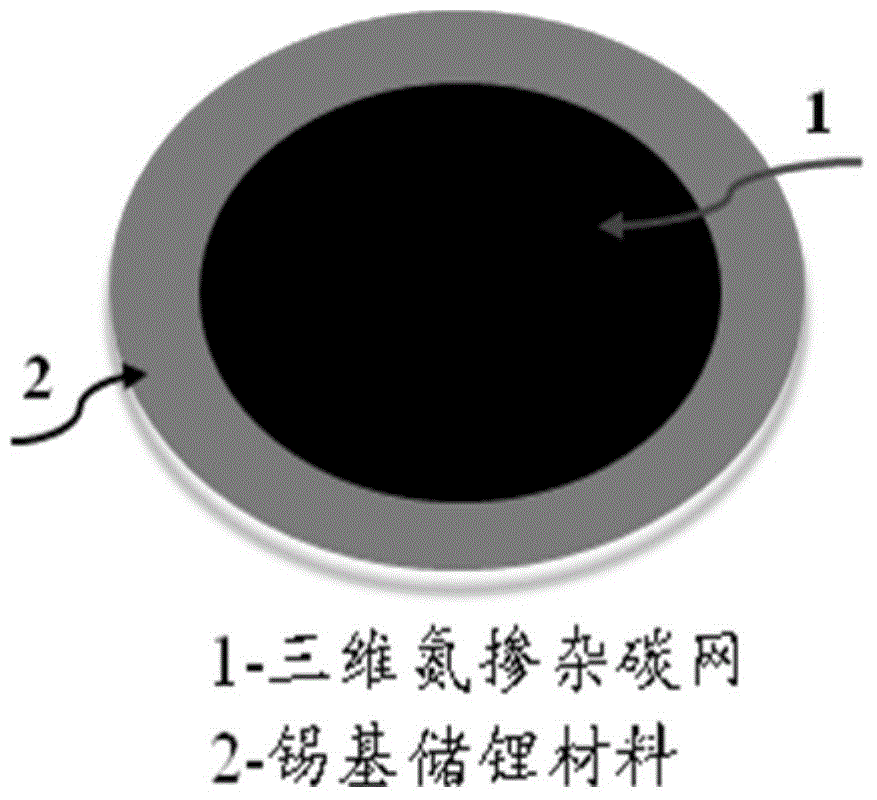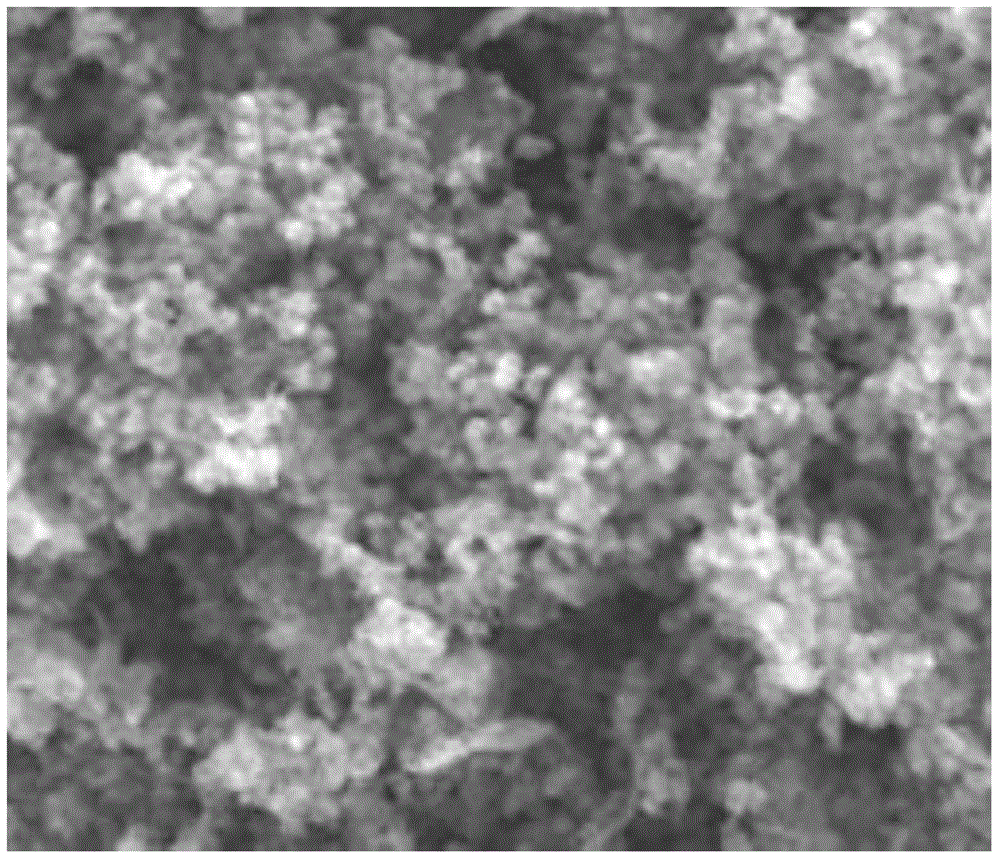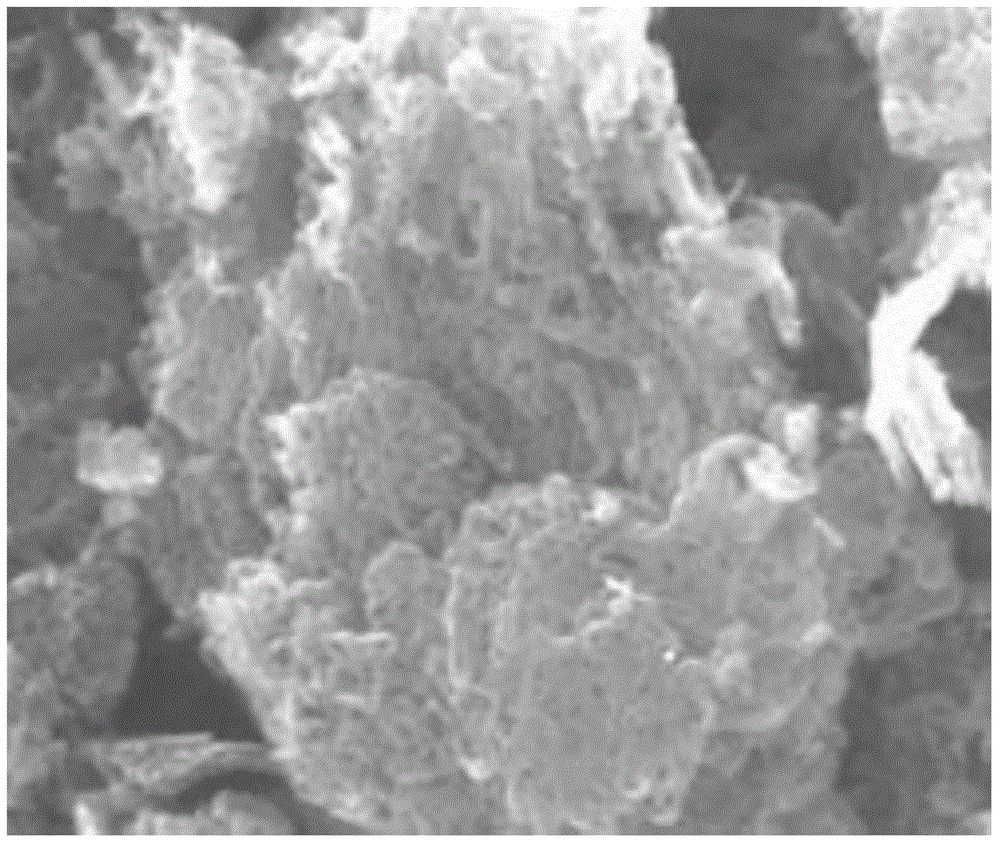Composite negative electrode material and secondary battery thereof
A negative electrode material, secondary battery technology, applied in battery electrodes, circuits, electrical components, etc., can solve the problems of large volume change, poor rate performance, etc., and achieve the effect of simple and convenient process, low cost, and extended layer spacing
- Summary
- Abstract
- Description
- Claims
- Application Information
AI Technical Summary
Problems solved by technology
Method used
Image
Examples
preparation example Construction
[0058] Optionally, the step in the preparation method provided by the second aspect: the step of subjecting the second mixed solution to an incubation reaction to obtain a black precipitate specifically includes:
[0059] The second mixed solution was incubated at 0 to 5° C. for 1 to 24 hours and then filtered to obtain a black precipitate.
[0060] Optionally, the black precipitate is washed to neutrality and dried, the dried black precipitate is placed in a tube furnace, and the tube furnace where the black precipitate is placed is fed with The mixed gas mixture of heteroelement hydride and inert carrier gas, after sintering, obtains three-dimensional nitrogen-doped carbon materials including:
[0061] Wash the black precipitate with a hydrogen chloride solution to neutrality and dry it at 50 to 100°C for 1 to 24 hours, then place the dried black precipitate in a tube furnace, and place the black precipitate in the A mixed gas of hydride containing doping elements and inert...
Embodiment 1
[0072] Preparation of three-dimensional nitrogen-doped carbon / tin composite anode material: after pyrolysis of polymers with C-N chemical bonds in the main chain, silicon active materials are loaded on the surface by chemical deposition method to obtain three-dimensional nitrogen-doped carbon / silicon composite anode material .
[0073] Specific steps are as follows:
[0074] The first step, cetyltrimethylammonium bromide (CTAB, (C 16 h 33 )N(CH 3 ) 3 Br, 7.3g) was dissolved in HCl (120mL, 1mol / L) solution in an ice-water bath, ultrasonically dispersed, and then ammonium persulfate (APS, 13.7g) was added to it, immediately forming a white suspension, stirred for 0.5 hours Then, add pyrrole monomer (Py, 8.3mL), keep warm at 0-5°C for 24h, then filter, wash the obtained black precipitate with 1mol / L HCl solution three times, and then wash with pure water until the solution is Colorless and neutral, then the precipitate was dried at 80°C for 24 hours, and finally the dried pr...
Embodiment 2
[0082] Preparation of three-dimensional nitrogen-doped carbon / tin composite anode materials: after pyrolysis of polymers with C-N chemical bonds in the main chain, nano-SnO is deposited on the surface by hydrothermal method 2 , to obtain a three-dimensional nitrogen-doped carbon / tin composite anode material.
[0083] Specific steps are as follows:
[0084] The first step, cetyltrimethylammonium bromide (CTAB, (C 16 h 33 )N(CH 3 ) 3 Br, 7.3g) was dissolved in HCl (120mL, 1mol / L) solution in an ice-water bath, ultrasonically dispersed, and then ammonium persulfate (APS, 13.7g) was added to it, immediately forming a white suspension, stirred for 0.5 hours Then, add pyrrole monomer (Py, 8.3mL), keep warm at 0-5°C for 24h, then filter, wash the obtained black precipitate with 1mol / L HCl solution three times, and then wash with pure water until the solution is Colorless and neutral, then the precipitate was dried at 80°C for 24 hours, and finally the dried precipitate was place...
PUM
| Property | Measurement | Unit |
|---|---|---|
| Aperture | aaaaa | aaaaa |
| Thickness | aaaaa | aaaaa |
| Particle size | aaaaa | aaaaa |
Abstract
Description
Claims
Application Information
 Login to View More
Login to View More - R&D Engineer
- R&D Manager
- IP Professional
- Industry Leading Data Capabilities
- Powerful AI technology
- Patent DNA Extraction
Browse by: Latest US Patents, China's latest patents, Technical Efficacy Thesaurus, Application Domain, Technology Topic, Popular Technical Reports.
© 2024 PatSnap. All rights reserved.Legal|Privacy policy|Modern Slavery Act Transparency Statement|Sitemap|About US| Contact US: help@patsnap.com










